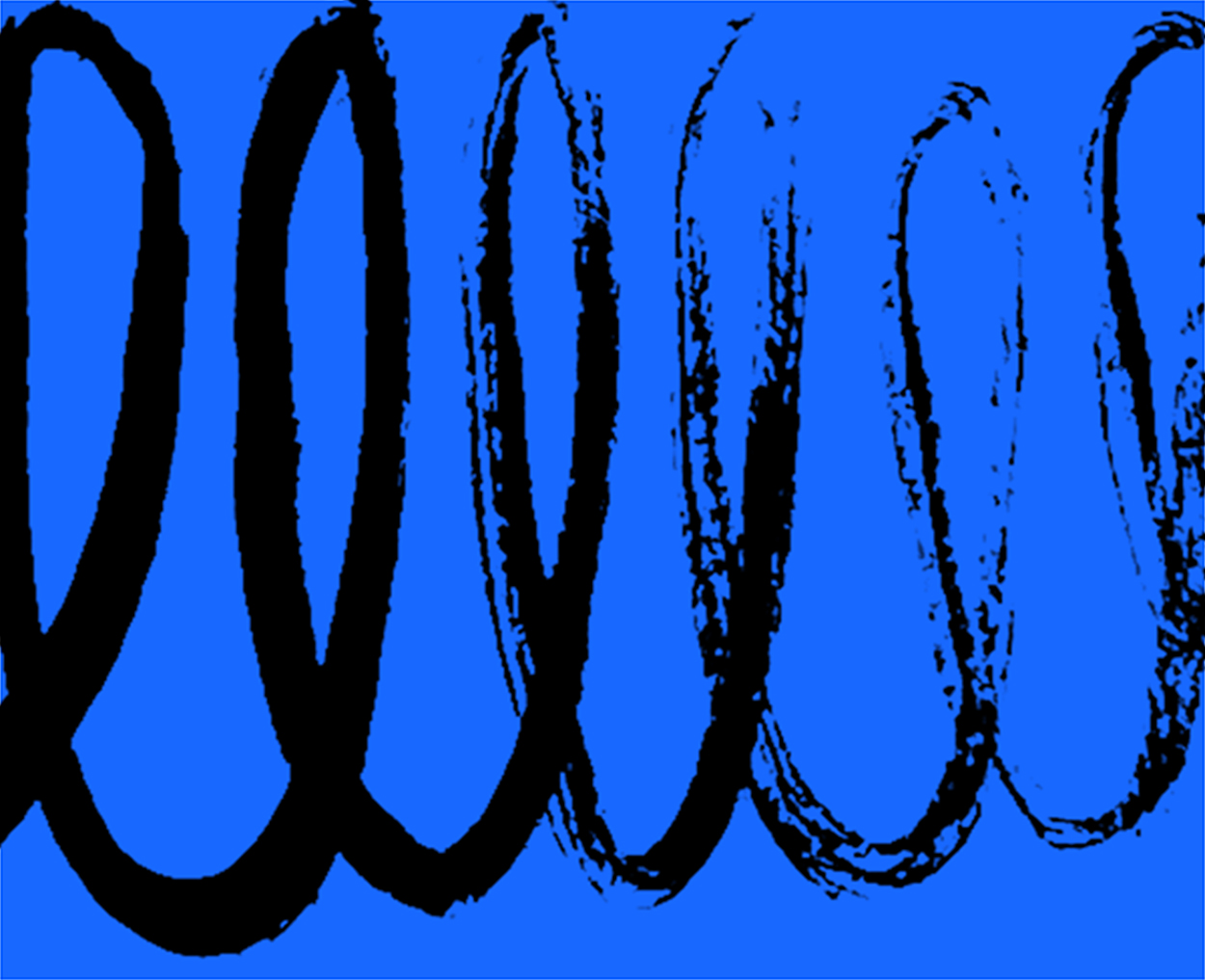
May 19, 2008
Credit Where Credit Is Due…Or Not

Sundance Channel on-air identity, designed by Keira Alexandra, 2004
I was recently in the bookstore and I saw a big green book called Broadcast Design. I was pleasantly surprised upon opening it to see some very nice reproductions of work by my former boss at Sundance Channel, Keira Alexandra. I was not so pleasantly surprised to discover that neither she, nor I, nor anyone who had actually worked on these projects was credited…at all. I couldn’t escape the feeling that this was not right, but I also couldn’t put my finger on exactly who was in the wrong. Should I be upset at the editor, for not demanding complete and accurate captioning information?; The publisher, for not fact-checking?; The VP of Brand at Sundance, who was interviewed for the book despite the fact that the work in it was done before she joined the channel? I had stumbled into a very murky area of design — attribution.
In its Standards of Professional Practice the AIGA makes this unequivocal statement regarding authorship, “When not the sole author of a design, it is incumbent upon a professional designer to clearly identify his or her specific responsibilities or involvement with the design. Examples of such work may not be used for publicity, display or portfolio samples without clear identification of precise areas of authorship.” Unfortunately, this dictum has not led to consistency in the way graphic design is credited in magazines, books, websites, or contests and doesn’t address the problem of unattributed work.
The AIGA’s stance speaks to what has traditionally been the major issue in graphic design attribution — in such collaborative work why does a single designer end up getting the credit? Micheal Bierut gave a detailed exploration of this issue in his post Credit Line goes Here. But there are a lot of other open questions about giving credit in design. For example: What about young designers who put work done at a well-known studio on their personal portfolio site? What about big studios that use a monolithic studio credit for the work done by individual employees? And (as in the Sundance Channel example) what about work that goes completely uncredited?
Design annuals exemplify one extreme of the design attribution quandary. In order to avoid missing anyone they feature exhaustive (and exhausting) lists of project participants, carefully ticking off everyone and everything from creative director down to the software used. Such attempts at thoroughness, however, illustrate the futility of attribution in design. Each level of detail that is included reveals another level in the network of causation that is not. (If software is included, why not software authors?). Or, in other cases, an individual name is repeated over and over again in a single caption.
Other professions have much more highly developed languages of attribution. In films, for example, credit is acknowledged once and for all and in detail at the end of a film. There is a great deal of horse-trading, arguing, and appeasement regarding the credits for any film project, but by opening night everything’s printed on film, the modern equivalent of being set in stone. In contrast, a piece of design can reach the widest audience and still remain anonymous. There is generally a lag between the completion of a design project and the need to write the attribution for a contest or reproduction. Film credits have been instrumental in codifying the labor hierarchy in the film industry, institutionalizing a shared vocabulary of job titles and responsibilities. No such standard has evolved in design — for example the term Art Director means something vastly different in an in-house design department than it does at an advertising agency.
It is precisely these native complexities and contradictions in graphic design authorship that are used to justify the kind of blanket corporate attribution used by Sundance Channel in Broadcast Design. Rather than wade into such ambiguous waters, it is easier to simply not credit anyone. Many large design studios have reached a similar conclusion and simply credit any work done at the studio to the studio entity. Frequently the mainstream press simply leaves works of design unattributed as if they were produced out of thin air.
Part of the problem is that attribution only becomes an issue after a work has become enduring or “important” and by that time it’s hard to recreate exactly how it came about. Most of the time design is a compromised, rushed commercial enterprise and it would seem pretentious (if not perverse) to diligently record this information while a project is in process. Even if there were the time, the roles on a design project are incredibly fluid: ideas come from all over, designers come and go, bits of a project are farmed out, last-minute changes are made and so on. It is only months or years later when a piece of work garners some notice that all of these twists and turns are revisited. Indeed, preparing the caption for the image at the beginning of this article started with numerous e-mails and more than one Google search before I gave up and simply credited the creative director.
On the other hand designers now have seemingly limitless opportunities to promote themselves. On a portfolio site, a blog post or a Facebook page, designers are free to make their own assertions about their contribution to a given project. This was not the case when the only opportunities for recognition were only a handful of contests and publications each year. Now every designer has their own “catalog” site and design work circulates in a fairly unregulated way even within the design press.
The lack of a consistent professional standard for attribution is rooted in the fact that Graphic Design has traditionally been an anonymous pursuit. In fact, the vast majority of graphic design is still done by unknown designers for unknown clients. It is a testament to the increasing influence of design that people care at all who animated a network interstitial or laid out a signage system. Perhaps this enhanced profile has made an unrealistic expectation that designers should get credit at all in a field with a blurry notion of authorship. Or perhaps the proliferation of design media channels simply offers more opportunities for half-truths and situational ethics when it comes to giving credit (and taking it).
Observed
View all
Observed
By Dmitri Siegel
Related Posts

Business
Courtney L. McCluney, PhD|Essays
Rest as reparations: reimagining how we invest in Black women entrepreneurs

Design Impact
Seher Anand|Essays
Food branding without borders: chai, culture, and the politics of packaging

Graphic Design
Sarah Gephart|Essays
A new alphabet for a shared lived experience

Arts + Culture
Nila Rezaei|Essays
“Dear mother, I made us a seat”: a Mother’s Day tribute to the women of Iran
Recent Posts
Minefields and maternity leave: why I fight a system that shuts out women and caregivers Candace Parker & Michael C. Bush on Purpose, Leadership and Meeting the MomentCourtney L. McCluney, PhD|Essays
Rest as reparations: reimagining how we invest in Black women entrepreneurs Food branding without borders: chai, culture, and the politics of packagingRelated Posts

Business
Courtney L. McCluney, PhD|Essays
Rest as reparations: reimagining how we invest in Black women entrepreneurs

Design Impact
Seher Anand|Essays
Food branding without borders: chai, culture, and the politics of packaging

Graphic Design
Sarah Gephart|Essays
A new alphabet for a shared lived experience

Arts + Culture
Nila Rezaei|Essays

 Dmitri Siegel is currently the Executive Director of Marketing for Urban Outfitters where he oversees creative, marketing and e-commerce for the brand in North America. Dmitri has published and lectured widely on the topics of design, technology and digital culture.
Dmitri Siegel is currently the Executive Director of Marketing for Urban Outfitters where he oversees creative, marketing and e-commerce for the brand in North America. Dmitri has published and lectured widely on the topics of design, technology and digital culture.